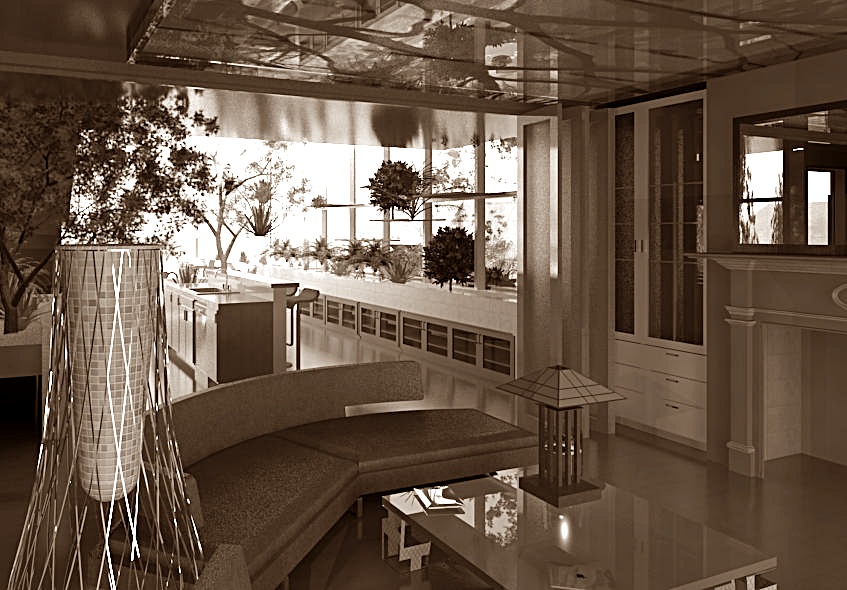What changed?
An interesting consequence of mobile communication is it revamped personal space. It is not the traditional physical control over an area, but the ability to ignore one’s surroundings and be immersed in a virtual universe that is infinitely customizable in terms of scale and content. I don’t know if the smart phone was designed to draw us in and create a bubble of individuality around us, but essentially this is what it does.
How does the move to digital influence the use of space?
Look around you in airports, doctor’s waiting rooms or bus stations. Wherever people have to wait among strangers they retreat into their digital universe where all their favorite things await and where their friends and interests are one short message away. What other gadget would help one spend five hours between flight connections without getting bored or feeling uncomfortable?
Grown-ups take the digital interaction in stride, refusing to look impressed; if you really want to see the magic smart devices exert on people, watch the children use them. The tablet has no secrets for the two year old. One is humbled by the intuitive ease with which a small child navigates between screens, YouTube videos, and online games.
Under these circumstances, if humans are not physically uncomfortable while texting and browsing, the demands on the architectural setting to create and sustain interest are reduced significantly.
A shift towards comfort
What can the long suffering architect offer to compete with a virtual world that educates, entertains, gives people a platform to express themselves, bends to their every whim and is always there for them?
Comfort.
Comfortable seating with agreeable views, pleasant temperatures, appropriate lighting, non-jarring color schemes, and engaging activities that provide people with the ability to interact or lay back if they wish.
The idea of comfort is very evident in spaces designed for children. They are always the right scale and cater to a child’s needs, likes and usual activities. I always wondered what a comparable space would look like for grown ups and now I know: a world with enough electrical and data outlets so one doesn’t need to leave one’s favorite chair to recharge one’s smart device.
Architecture borrowed the power to stir emotions and create states of mind from the abstract world of art; for the longest time the most impactful way to create great buildings was to wow, overwhelm, convey authority.
Contemporary sensibility focuses on the unseen components of comfort: temperature, air quality, noise control, the ability to command one’s immediate surroundings. I think we should add a few factors not related to sustainability: connectivity, ergonomics, negative stress avoidance. (Here is an example of avoidable negative stress: a cashier works in proximity of the door. Every time the door opens during winter, a blast of cold air is aimed directly at her. The temperature discomfort is amplified by the random repetition of the stressor.)
What is designing for comfort in the mobile age?
1. Creating cozy spaces. People’s visual sense, hearing and attention are focused on the screen, so they will be less impressed with features that speak to this range of perception. They will be pleasantly surprised by comfortable seats, soft textures, nice scents, and soothing sounds (water features and relaxing music).
2. Hot-spots control the use of space. Even the most wonderful lounge will stay deserted in the absence of data outlets.
3. Sufficient lounging areas, informal, reasonably private. Seating is a sensitive design feature, there is always too much or too little of it and wide open spaces filled with chairs feel generic and uncomfortable. Sitting on the floor in public spaces has become socially acceptable, keep that in mind while selecting flooring.
4. Personal sound control. We may live in the noisiest times yet and the reduction of sound stressors considerably improves the experience of a space.
5. Environmental flexibility. Control over light, temperature, humidity, air quality and movement in one’s immediate surroundings.
If designing around individual preferences seems too daunting a task, consider the fact people can effortlessly customize their web search, screen display, tweets, friends list, news feeds and push notifications. Imagine going to a symposium and being able to redesign the room on the spot while deciding what the topic of the conference is going to be. Moreover, if you didn’t get the chance to go, the speaker shows up at your convenience to give you a brief outline on the topic.
We can’t do that, of course, but what we can control is creating a space that bends around people’s needs, not one that makes them adjust.


